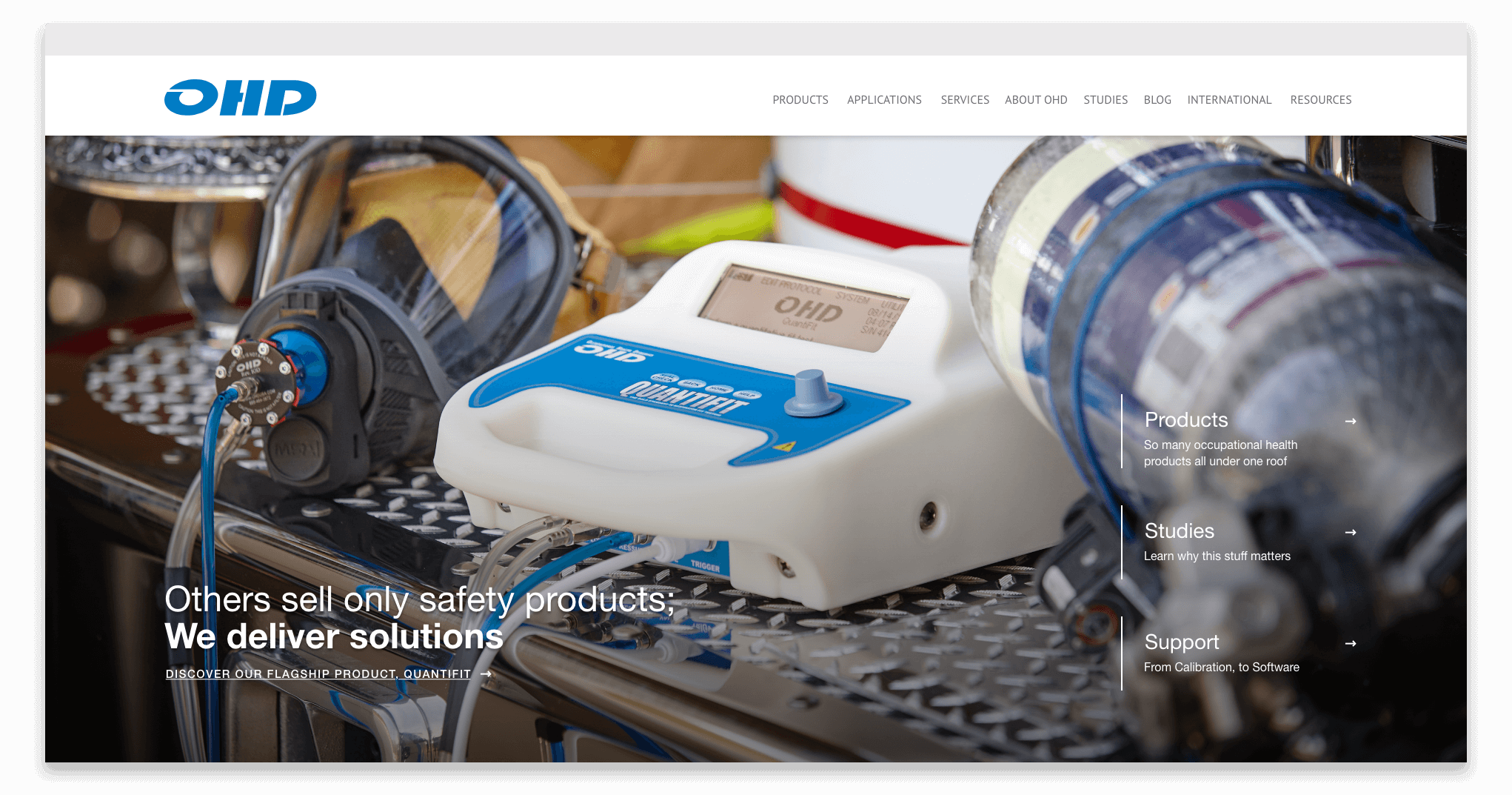OHD “Wake the Dead”
How Profitable Can a List of Dead Contacts Be? Very.
Case StudyOHD “Wake the Dead”
For each dollar spent, OHD earned $22.65
The Challenge
Everyone wants profitable, sustainable growth. The trouble is that the barriers to that growth are often tough to isolate.
Few sales problems are simple, particularly for B2B organizations. After all, one of the defining characteristics of our clients is the inherently complex nature of their sales process. Often, it takes time, as much as two years, to close a sale. They must convince multiple decision-makers and influencers, each with their own opinions and motivations. The product or service itself can be complex and hard to explain. And expensive.
That’s what makes a closed deal the ultimate expression of alignment – especially in B2B transactions. Indeed, the best buying experiences occur when you’ve removed the barriers standing in the way of your marketing department, sales team, and, most importantly, your customers. It’s about understanding what information (or sales behaviors) a prospect needs at each step in the CDJ and ensuring that you deliver the right message, the right behaviors at the right time.
Here’s one story about how we helped Occupational Health Dynamics close more deals, almost overnight, by removing the late-stage sales barriers keeping prospects from becoming clients.

Industry
B2B Manfacturing
Conversion Point
Contemplation to Exchange
Solution
Occupational Health Dynamics provides occupational health equipment to first responders and industrial clients.
Their offerings range from respirator fit testers to vision and hearing protection to spirometers and intoxylizers. Many of OHD’s products are integrated with software programs that enable mobility (for use out in the field) and data analysis.
OHD’s sales and marketing teams lacked not only a way to validate whether a prospect was ready for a salesperson to call, but they also needed a common language to clarify where each prospect was in the sales cycle. OHD came to us because they wanted something more than “greater sales.” They wanted the kind of alignment between marketing, sales and customers that sustains growth over time.
Before partnering with FitzMartin, OHD was averaging about four leads per month through a fragmented marketing and sales program. Once we were able to help them achieve better sales alignment and marketing, they generated 22 leads per month: a 450% increase. Moreover, they saw higher quality leads as well – the kind that closes faster. Consequently, OHD’s sales and marketing teams are more efficient AND more effective.
Through the course of helping OHD align their marketing and sales processes (and people), we saw an opportunity to drive immediate sales while onboarding the client onto a MAT system (think HubSpot). During a quarterly planning session between the FitzMartin and OHD teams, they shared with us a list of 16,000 dormant contacts; these were people who had expressed an interest in OHD’s flagship product but hadn’t been contacted in a while. The list was populated from trade show contacts, referrals and other marketing initiatives over the years.
As we uploaded the list to HubSpot, we of course wanted to validate that the list wasn’t stale. However, it occurred to us that the dormant list was also an opportunity to teach the client how to put the Cognitive Marketing Model into practice. We also saw this as a chance to apply the progress being made toward the big picture, long-term objectives in order to drive immediate, short-term wins. So, we proposed a “Wake the Dead” marketing campaign to that dormant list.
Here’s how the “Wake the Dead” effort unfolded:
We dug into the dormant list to determine who the contacts were and to study their interaction history in order to determine where each prospect was in the buying process.
We then applied OHD’s existing prospect personas towards email and content offerings for each type of contact.
From there, we created a workflow map that outlined different conversion points in the buying experience based on prospect behavior – how they react to each of our marketing and sales touches.
To our surprise, the first email to the dormant list yielded only a 5% bounce rate. Based on the analytics from the initial email, we were able to assign the list to a stage in the Cognitive Marketing Model based on their interactions. We then let the automated workflow send out the content best suited to each prospect at their corresponding stage in the buying experience.
Whenever we write content, we factor where a buyer is in the CDJ and assign a lead score accordingly. For the “Wake the Dead” effort, we assumed each contact in the dormant list was a Stage 1 prospect, but we also created Stage 2, 3 and 4 messages (and the associated content offerings) in the event we saw movement from a given prospect through the buying experience; or if we encountered a later-stage prospect in the dormant list.
$325,325 in net new revenue
We gave each list contact the ability to convert to a product demo at each stage. In doing so, we had to acknowledge that a product demo is the point where a prospect is handed off from marketing to sales. As such, in planning this campaign we had to not only contemplate the right sales actions, we also had to have a deep enough understanding of the demo experience; both in terms of what the prospect and sales team members wanted the demo to accomplish.
We sent out the emails, analyzed the data and reported on our findings. Of our list of 16,000, we had a 20% open rate. Great! The contacts on that dormant list actually wanted to hear from us, despite not having heard from us, possibly, in years. Naturally, some contacts unsubscribed. But as we let the campaign run, we noticed a spike in landing page traffic, web page traffic, conversions on our landing page and submissions on our contact page. That was exciting!
Even more exciting: the 78 leads converted by the campaign. Moreover, of those 78 leads gleaned from dormant contacts, 35 purchased a product (in some instances, those new customers purchased multiple offerings). Not bad for a dead list!
Seeing the big picture – the psychology behind purchase decisions – will also help you ascertain the little opportunities to drive revenue – even in a dormant prospect list. We were able to drill down to discover there were dormant prospects not only open to hearing from OHD, but they were ready to buy as well! And those 78 new contacts are actively enrolled in a workflow-nurturing campaign with an eye towards further sales opportunities.
It’s worth reiterating that this campaign arose from a sales and marketing alignment (e.g. sales enablement) engagement. We meet regularly with OHD’s Senior Vice President of Sales and the Director of Marketing to review conversions, lead status and quality and campaigns in new markets.
The Big-Picture Impact
The “Wake the Dead” campaign was an opportunity to show OHD what marketing automation technology is REALLY about: It’s a way to create an airtight buyer experience and automate it accordingly. They didn’t have much experience in Cognitive Marketing or MAT, so they needed to see how our approach looked in practice.
OHD’s huge investments in CRM and MAT necessitated a cultural shift – it took total commitment from the business in terms of time and money. They also had to be comfortable with transparency – they couldn’t measure web and trade show leads and ROI until FitzMartin came along. Now, they can make decisions based on the data instead of the feels.
Building and executing an airtight buying experience means adopting a clear definition of when a lead is ready for sales. Otherwise, sales folks who live on commission are incentivized to pounce on prospects too soon. You don’t want sales chasing leads that aren’t ready. That’s especially true in organizations that lack mature marketing functions. After all, marketing is a powerful choreographer of effective buying experiences.
It would be easy to punctuate the great results from the “Wake the Dead” campaign and call it a day. But, this effort isn’t a one-off or a lucky break. It was devised amidst building a repeatable, scaleable buying experience. The deep thinking and heavy lifting driving our marketing and sales alignment initiative was the antecedent to a radical surge in sales. The long-term goal, though, is to build something that sustains the momentum – and growth.

